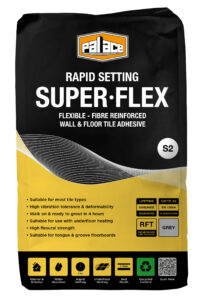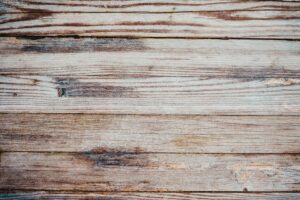INTRODUCTION
It should be noted that due to the variety of application & environmental issues likely to influence the curing of a cement-based grout joint, that it is virtually impossible for the dry composition of the pre pre-blended grout powder to produce localised variations or patchiness in the appearance of the applied grout without first having been affected by any one of the patchiness following factors, all of which are beyond the control of the manufacturer.
MIX CONSISTENCY
It is essential to ensure the powder is mixed thoroughly and consistently in a clean vessel with clean water to form a smooth, homogenous and lump-free paste. Additional mixes of grout for larger projects must be produced from the same batch of powder, using an identical water addition, whilst again achieving a fully consistent, smooth lump-free paste. Never excessively add more water than the recommended volume
JOINT PREPARATION
All joints to be grouted must be of consistent depth and raked clean of any adhesive residue as any contaminant in the open joints will consequently result in irregularities in the depth & consistency of the freshly applied grout. Both of which may result in shade variation.
TILED SURFACE CLEANING & JOINT FINISHING
Immediately after grouting when wiping down to remove the excess mortar from the tile face around the joints, care must be taken not to ‘over-wet’ the freshly compacted joints, as this may affect water content in some joints but not in others, leading to a higher concentration of fine surface laitance and would raise the possibility of a lighter shaded surface appearance in these areas.
Brushing or dry-wiping over a grouted floor joint when the paste has bodied up, but is still not set can disturb the surface finish and open up the texture of the grout to give a coarser and darker shade than when the grout was first laid and finished off with a wet cloth or sponge and any contact with the surface at this point in time must be even and consistent over all areas to ensure the hardened appearance retains an equivalent degree of dryness and surface texture, otherwise shade variations are likely.
GENERAL SURFACE MAINTENANCE
When cleaning the completed tiled surface, you must ensure that the materials and cleaning agents used are applied consistently, are not used at excessive concentrations and are rinsed off promptly as soap and detergent residues can accumulate in joints and affect appearance, particularly when exposed to moisture.
EFFLORESCENCE
The initial set & hardening of a cement-based grout may result in surface salt & lime deposits forming as water evaporates, known as ‘lime bloom’ and happens when excess water is present either in the mix or after washing the grouted surface.
Efflorescence can also be become apparent when water penetration occurs either through the surface of the cement-based material or from sub-floors where no effective and adequate damp proof course is in place. This phenomenon often diminishes over time with repeated surface washing & drying, however control of mixing water dose and also the wash cycles during the removal of grout stain residues will also reduce risk of efflorescence in the cured joints.
SUBSTRATE TYPE
Variations in the density or porosity of the surface beneath the tiles will encourage some areas of the grout joints to dry out at a different rate to others, usually illustrated where darker areas of the grout are laid over dense or impermeable section of flooring, whereas lighter shades will be evident over the more porous and drier sections of the substrate flooring.
SERVICE CONDITIONS
The end use of the tiled location needs some consideration as this may result in some areas being exposed to wetting more frequently than others, which consequently will result in the damper sections appearing slightly darker than the drier areas. Regular and localised wetting of one area at a more frequent rate than the surrounding tiled area will result in a shade variation due to the moisture level retained within the cured tile joint.
TILE TYPE & FINISH
Porous tiles, substrates or joints adjoining the cut edge of a tile will be exposed to greater risk of moisture absorption from the wet paste than less porous surfaces or true tile edges. This can produce localised variations in moisture content and when fully cured will manifest in a shade variation from joint to joint.
SUMMARY
To maintain an ideal consistent appearance in all grout joints, it is essential to ensure consistency is applied at all stages of the application process, including the type of tooling used to finish off joints, the amount of moisture introduced & allowed to remain when cleaning the tiled surface and the finish time which elapses between initially compacting the joints and then returning to tool the joints to a smooth clean edged finish. Where any one of the above precautions is not followed then it is possible to encourage shade variation in the final colour of the hardened grout, which may only then resolved with the application of a mildly acidic surface cleaning agent.
It should be noted that in most cases, the lightening of dark joints is due to efflorescence blooms of naturally occurring lime which is released by drying cycles from within the Portland cement base. This is often a transient feature as the natural cycles of wet & dry periods following cleaning or exposure to weather (if external) will result in the surface stabilising to a consistent shade as the lime is washed away.
A document is also available here for printed reference.



